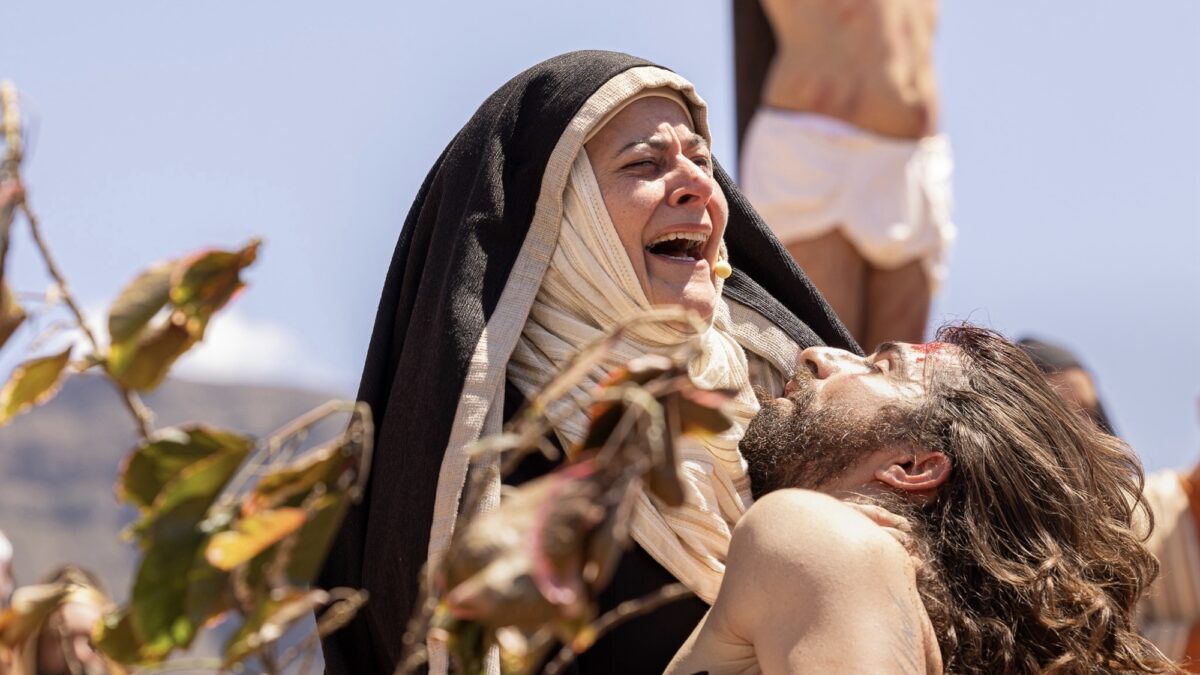Adeje’s Passion Play continues to find new expression, scenes, costumes and sounds
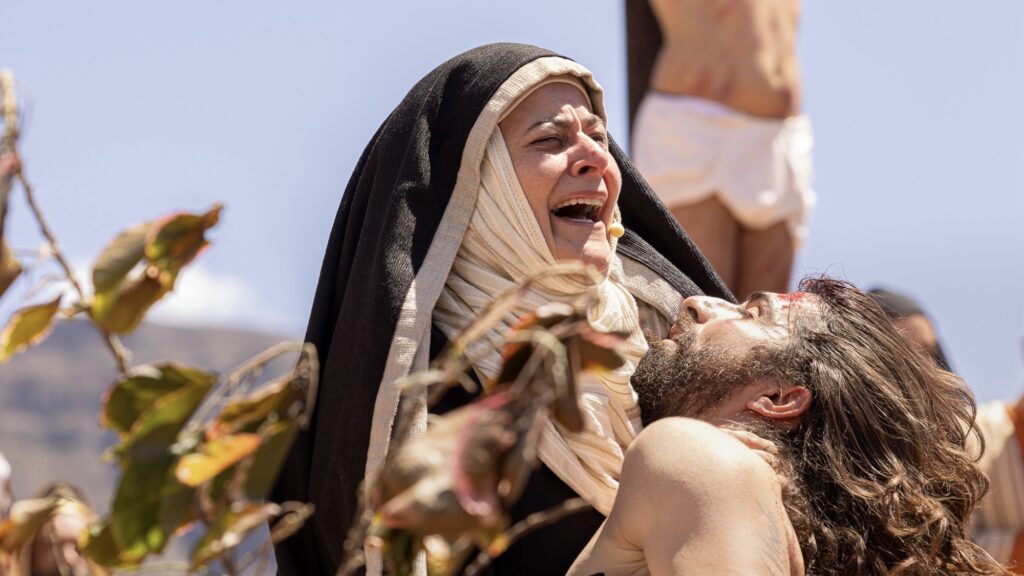
This year’s performance includes a new Sanhedrin set, an original scene between Saint Peter and Saint John, and a soundtrack that deepens the emotional impact of the performance
Adeje’s annual Good Friday Passion Play, ´La Pasión´, one of the municipality’s most iconic theatrical productions, will take place again this year, on Friday 18 April starting at 12 noon on the Calle Grande, and with new elements including a new Sanhedrin set, an original scene between Saint Peter and Saint John, new costumes and props, and a soundtrack that enhances the emotional intensity of the performance.
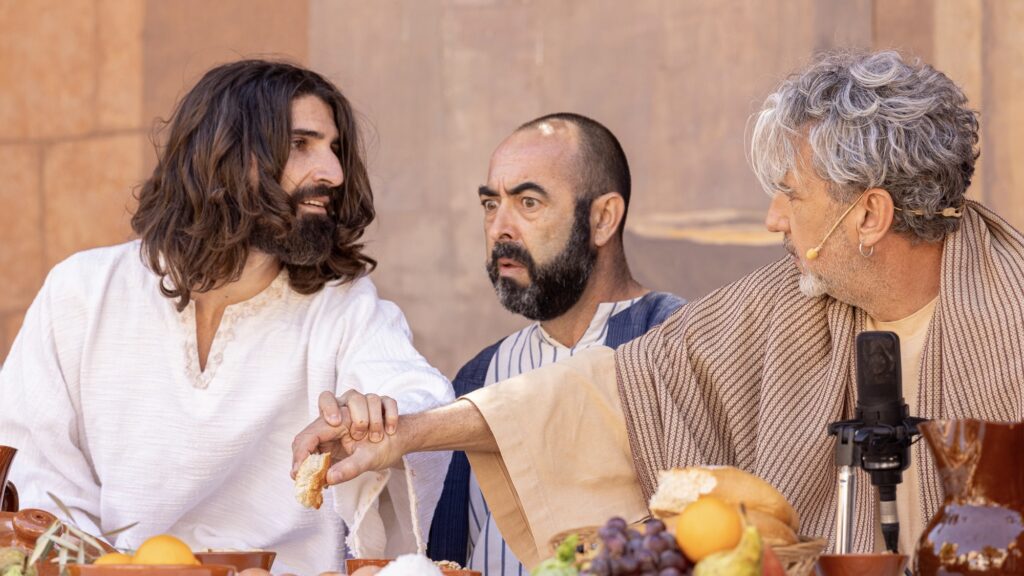
This year, around 300 amateur performers will take part, supported by the technical and logistics teams who make the annual event possible. The production is organised by the Adeje department of culture, headed by councillor Adolfo Alonso, with stage direction by Laura Marrero, artistic direction by Freya Jaén and Conrado Díaz, and the involvement of staff from the department, technicians, props and set designers, costume, hair and makeup professionals. The communications element is also key – from audiovisual production to the writing team, social media, website and radio – all of which contribute to making this Adeje event a recognised cultural and tourist attraction with international appeal.
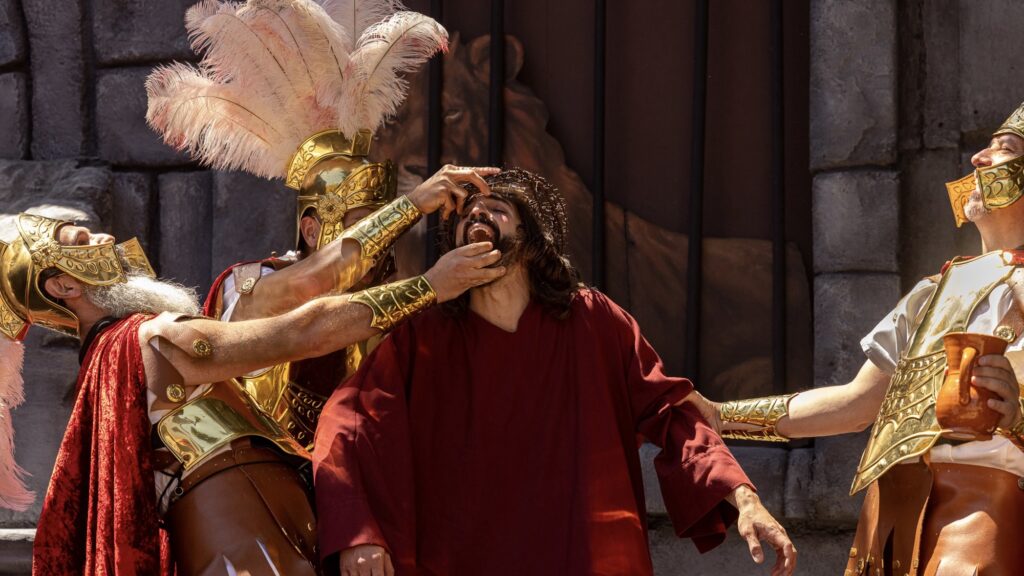
La Pasión will be broadcast live on Televisión Canaria and as a delayed broadcast nationally on 13 Televisión. It will also be aired regionally on Mírame Televisión, Canal 4 TV and Canal 10 TV. Local media such as Radio Sur Adeje 107.9 FM and Adeje Town Hall’s social media (Facebook and YouTube) will also share the event, with live commentary in English on Facebook
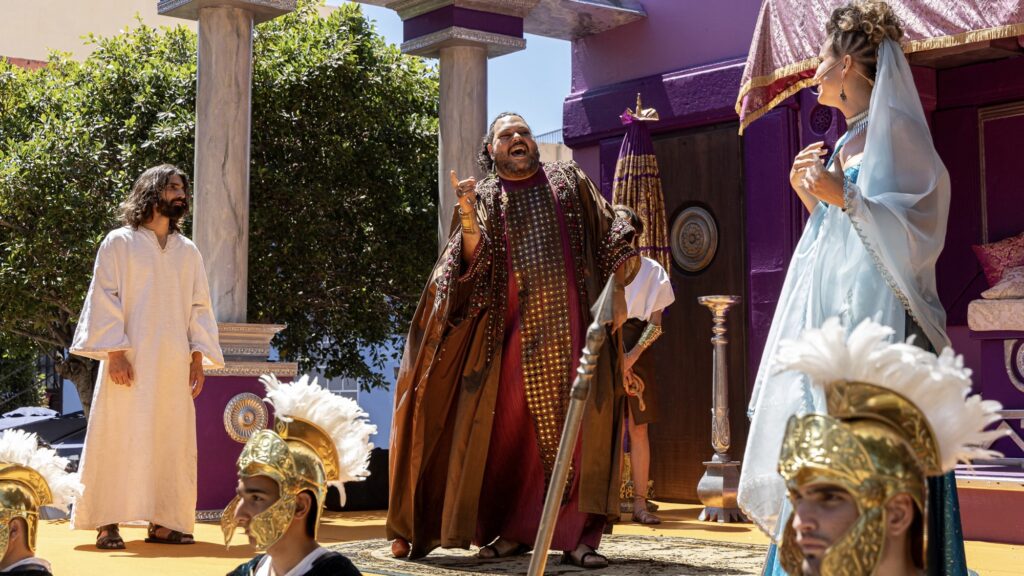
2025 highlights
The 2025 Adeje presentation of the representation of the last days and crucifixion of Jesus includes significant innovations that enhance both its artistic quality and visual impact. There have been improvements in costume design, particularly in the outfits of Herod’s and Claudia’s dancers, along with the addition of new elements for the Roman soldiers, bringing greater realism to each scene. The town and stage areas have also been enriched with new props, improving the overall setting.
For the second time, an early procession will precede the main performance. In this, the ‘Nazareno del Perdón’ (the Nazarene of Forgiveness) is carried in procession from the La Viña Hermitage to the parish church of Santa Úrsula. There, a symbolic act takes place in which the parish priest is asked for permission (la venia) to begin the performance on the Calle Grande. Once the priest grants permission, the event officially begins.
One of this year’s major additions is the new scene between Saint Peter and Saint John prior to the denials, adding emotional depth to the story. Scenes introduced last year have also been enhanced, with improved pacing, drama and staging – notably, the scene between the Virgin Mary and Mary Magdalene.
Another major development is the debut of the new Sanhedrin set, created to emphasise the symbolism and solemnity of the religious trial. In addition, the fabric banners decorating the route have been completely renewed, offering a more elegant and unified look to the procession.
Some song lyrics have also been adapted to better align with the tone of the play, enhancing the emotional experience for the audience. Altogether, the representation continues to grow each year in both quality and public involvement.
The greatest story ever told
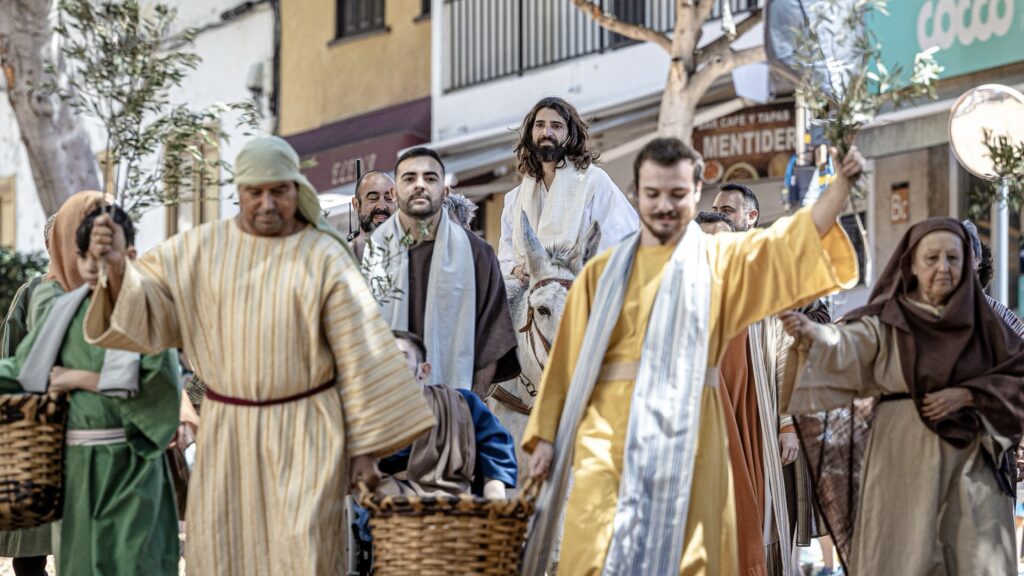
The Adeje ‘La Pasión’ unfolds in 13 scenes along Calle Grande, Plaza de la Cruz del Llano and Plaza de España. The play opens with a solemn, visually striking entrance led by Roman soldiers on horseback, Pilate’s chariot with Claudia, the Sanhedrin and Herod’s retinues, temple guards, dancers and the people of Jerusalem. This initial parade immerses the audience in the atmosphere of biblical Jerusalem.
Next is the entrance of the townspeople into the marketplace, setting the scene of everyday life before the key events unfold. In an intimate moment, the Virgin Mary and Mary Magdalene are shown together on the path, preparing to receive Jesus, with a moving dialogue that highlights Mary Magdalene’s spiritual transformation.
Saint John then enters, reflecting on God’s love and presenting Jesus as the Word made flesh. This leads into the messianic entrance into Jerusalem, where Jesus, riding a donkey, is welcomed with palms and cheers. Along the way, he meets his mother, local children, Mary Magdalene and local women accused of adultery, symbolising his connection to the people.
The Last Supper features the washing of the feet, the institution of the Eucharist, and the announcement of the betrayal. Tension rises with the scene of Judas, Annas and the 30 pieces of silver, where the apostle betrays his master for money.
In the Garden of Gethsemane, Jesus prays in deep anguish while his disciples sleep. The scene culminates in Judas’ kiss and the arrest of Jesus. The narrative continues with Peter’s denial, highlighting the fear and confusion among the disciples.
During the trial before the Sanhedrin, Jesus is unjustly judged by the religious leaders. Nicodemus tries in vain to defend him. When Jesus proclaims he is the Son of God, he is condemned for blasphemy. This is interwoven with a monologue by Judas – a heartbreaking scene in which, consumed by guilt, he takes his own life.
The trial before Pilate reveals the political tension of the time. The governor tries to avoid involvement by sending Jesus to Herod. In Herod’s palace, the king and Herodias mock Jesus, who remains silent, and send him back to Pilate.
In the final judgement scene, Pilate offers the crowd a choice between Jesus and Barabbas. Under pressure from the mob, he releases the criminal and condemns Jesus, washing his hands as a sign of his supposed innocence. This is followed by the Roman soldiers mocking Jesus, flogging him, placing a crown of thorns on his head, and dressing him as a false king.
The Way of the Cross begins, with Jesus weakened, carrying the cross and falling three times. On his path, he meets his mother, the Virgin Mary, Veronica, and the women of Jerusalem.
The Crucifixion and death scene takes place on Golgotha (Plaza de España). Jesus is nailed to the cross between two thieves. He speaks his final words and gives up his spirit. His mother, Mary Magdalene and John are by his side. Joseph of Arimathea and Nicodemus lower his body from the cross as Mary delivers a powerful monologue filled with sorrow, hope and faith.
The performance concludes with a solemn procession of the dead Christ, led by the centurion and followed by Jesus’s body, the three Marys (his mother, Mary Magdalene and Mary of Cleophas), the disciples, soldiers, members of the Sanhedrin and the people. The representation ends with a symbolic burial in the Church of Santa Úrsula, closing this moving journey of faith and tradition.
